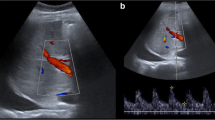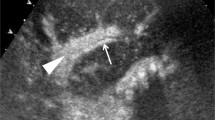Abstract.
Colour Doppler US is well established for imaging of hepatic vessels in the assessment of pre- and post-liver transplant patients. Unfortunately, a full colour Doppler US examination of the portal or hepatic venous and hepatic arterial systems is frequently precluded by technical factors. Ultrasound contrast agents are useful in enhancing vascular Doppler signal and play an important role in liver transplantation assessment. A series of patients with vascular problems illustrates the role of US contrast in the pre-transplant candidate, where portal vein patency and direction of flow is assessed, presence of portal vein thrombus is confirmed and cavernous transformation demonstrated. Occlusion of hepatic veins in Budd-Chiari syndrome is confidently confirmed. Following liver transplantation, US contrast allows a comprehensive assessment of hepatic artery thrombosis, hepatic artery stenosis and pseudoaneurysm formation. The need for further imaging is reduced or confidently deferred in many instances. Ultrasound contrast agents play an important role in the liver transplant candidate.
Similar content being viewed by others
Author information
Authors and Affiliations
Additional information
Received: 15 April 1999; Revised: 21 June 1999; Accepted: 22 June 1999
Rights and permissions
About this article
Cite this article
Sidhu, P., Marshall, M., Ryan, S. et al. Clinical use of Levovist, an ultrasound contrast agent, in the imaging of liver transplantation: assessment of the pre- and post-transplant patient. Eur Radiol 10, 1114–1126 (2000). https://doi.org/10.1007/s003309900117
Issue Date:
DOI: https://doi.org/10.1007/s003309900117




